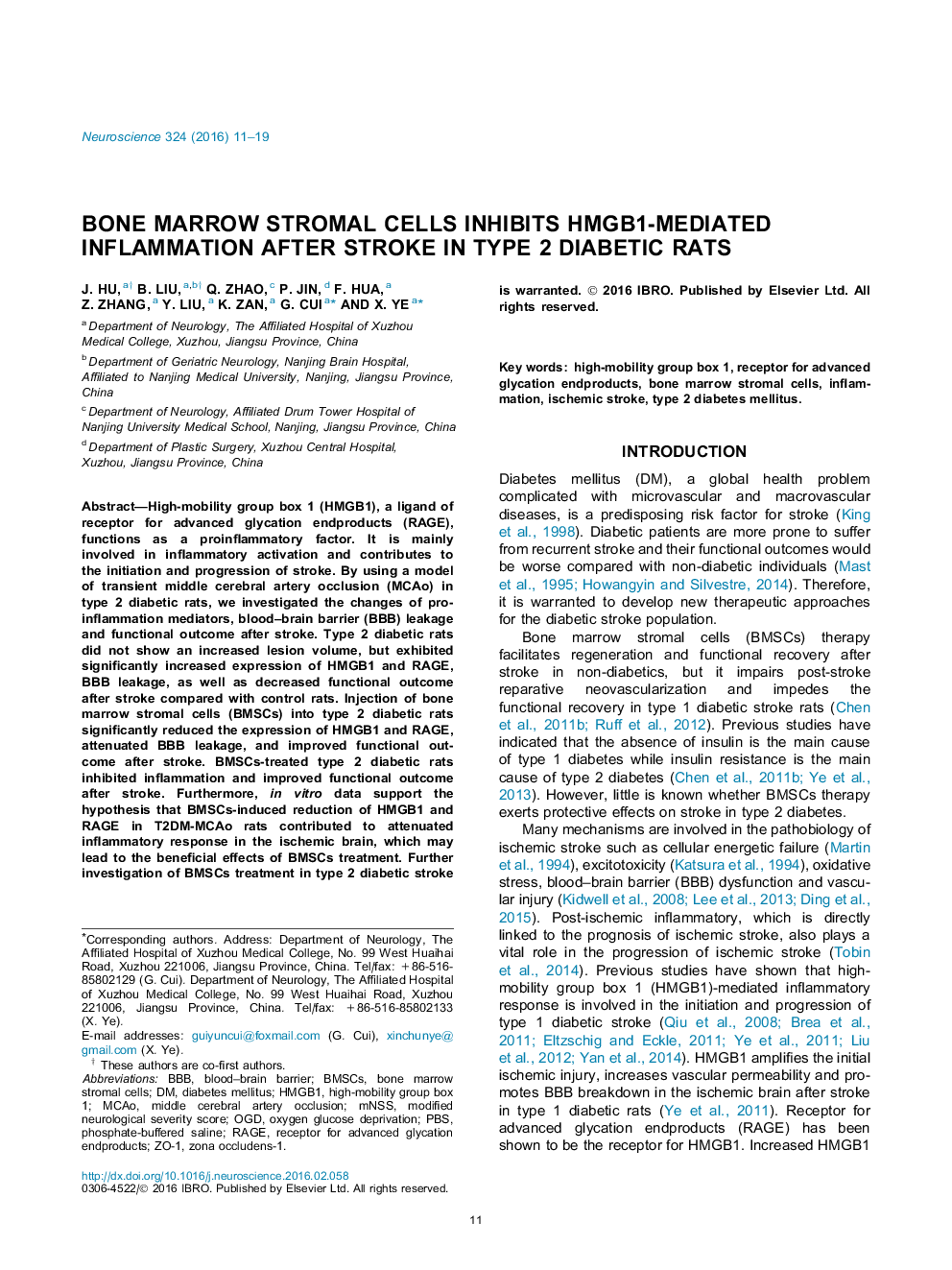| Article ID | Journal | Published Year | Pages | File Type |
|---|---|---|---|---|
| 4337339 | Neuroscience | 2016 | 9 Pages |
•BMSCs treatment improves functional outcome after stroke in type 2 diabetic rats.•BMSCs treatment attenuates BBB leakage after stroke in type 2 diabetic rats.•BMSCs treatment reduces the expression of HMGB1 and RAGE in T2DM-MCAo rats.•BMSCs treatment reduces the expression of HMGB1 and RAGE in OGD-induced microglia.•Regulation of HMGB1/RAGE by BMSCs treatment may contribute to the protective effect.
High-mobility group box 1 (HMGB1), a ligand of receptor for advanced glycation endproducts (RAGE), functions as a proinflammatory factor. It is mainly involved in inflammatory activation and contributes to the initiation and progression of stroke. By using a model of transient middle cerebral artery occlusion (MCAo) in type 2 diabetic rats, we investigated the changes of pro-inflammation mediators, blood–brain barrier (BBB) leakage and functional outcome after stroke. Type 2 diabetic rats did not show an increased lesion volume, but exhibited significantly increased expression of HMGB1 and RAGE, BBB leakage, as well as decreased functional outcome after stroke compared with control rats. Injection of bone marrow stromal cells (BMSCs) into type 2 diabetic rats significantly reduced the expression of HMGB1 and RAGE, attenuated BBB leakage, and improved functional outcome after stroke. BMSCs-treated type 2 diabetic rats inhibited inflammation and improved functional outcome after stroke. Furthermore, in vitro data support the hypothesis that BMSCs-induced reduction of HMGB1 and RAGE in T2DM-MCAo rats contributed to attenuated inflammatory response in the ischemic brain, which may lead to the beneficial effects of BMSCs treatment. Further investigation of BMSCs treatment in type 2 diabetic stroke is warranted.
